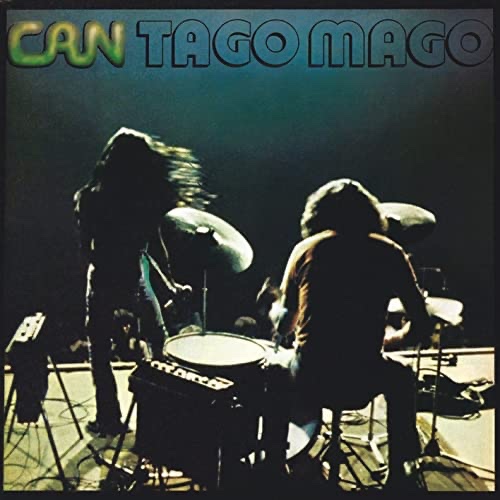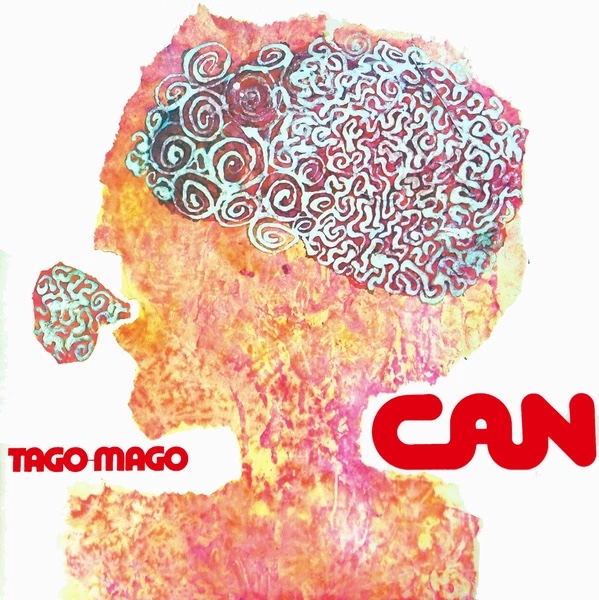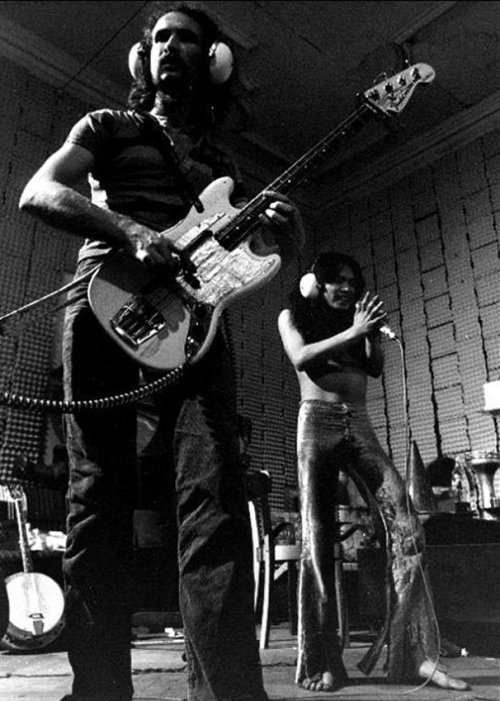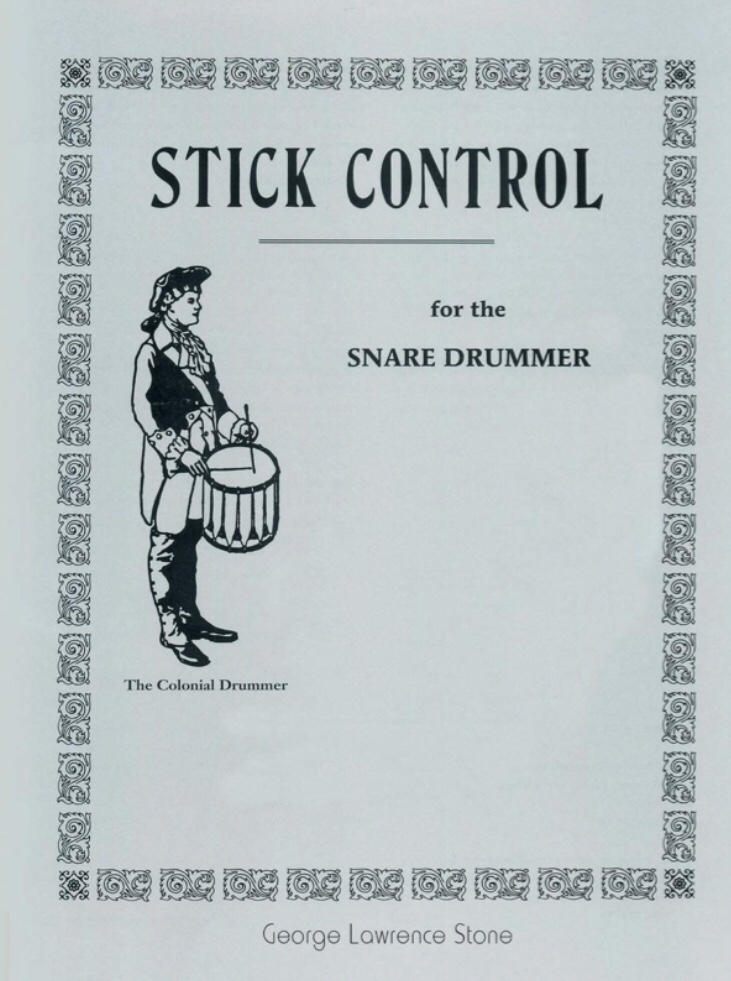

I usually prefer to buy CDs, as I’m a bit old fashioned that way. But this is selling for silly money on CD, so I’ve had to content to myself with downloading MP3s.
I already have Tago Mago on both vinyl and CD-reissue. But this 40th Anniversary re-re-issue has allegedly been significantly improved audio wise. Plus there are three bonus tracks. This being one of my all time favourite Can albums, I had to hear it.
The first four tracks are just mindblowingly awesome. To me at any rate. And they are why this gets five stars.
Paperhouse is kind of oddball, starting with a loping laidback but intense 6/8 groove and one of Michael Karoli’s best ever guitar parts, before turning into one of their hyper intense thermo-nuclear jams, finally emerging the other side, into a laid back jazzy swang-thang version of part one. Part one is my favourite section, followed by the jazzy re-iteration. But the whole thing is a real trip, in the parlance of those days.
Mushroom is fabulous. But I’ve waxed lyrical over that one elsewhere, and don’t want to repeat myself here. Likewise, Oh Yeah is just totally awesome. And it’s driven along on a groove by Leibezeit that I utterly adore. But I’ll say no more about it here for now.
Halleluwah- what a fantastic title! – is an epic grinding groove monster. Once again Jaki Leibezeit’s drum performance is just utterly flawless, and sublimely funky. But, as brilliant as he is, it only really becomes the complete Can experience because of what the collective bring to bear. And it’s a juggernaut of awesomeness!
And what about that middle eight or interlude? Which is followed by a kind of music concrete section of ‘noise’ solos, conjured from synths, guitars, percussion and goodness knows what.

For me it’s these four tracks that make Tago Mago an undeniably essential recording. And whilst I haven’t yet done a direct A/B/C comparison across the vinyl and my two different remasters as yet, there is both an intensity and clarity to these recordings that does seem to me to bring a new depth and power to bear.
And these recordings have always kicked aural ass, as far as I’m concerned. So for them to grow even bigger hairier musical balls, so to speak, is wonderful.
Oh, and whilst – perhaps partly cause I’m a drummer – I feel Jaki Leibezeit was Can’s secret weapon number one. After him I have to single out Damo Suzuki, whose nutty shamanic hollering and lyrics/melodies really add the song dimension to what might otherwise have been an amazing instrumental jam band.
But having singled out Leibezeit and Suzuki, whilst still listening to an extended instrumental section of Halleluwah I can’t not mention Irmin Schmidt, Michael Karoli and Holger Czukay. These cats are awesome. They really know how to brew up a cosmic groove!
Although it’s massively different from Weather Report, it’s also fundamentally very similar. If not in exact musical styles or textures, in that everyone is always soloing and yet no one is soloing. And at their mighty beating heart it’s all about improvisation.
This latest remaster is really something! I usually lose interest after Halleluwah. But Aumgn is playing now, and it’s fantastic. It’s certainly less accessible and compelling than the first four tracks. But as art-rock experimentation it’s top notch. I usually find such stuff anathema. But the clarity and sonic depth and richness of this latest remaster is helping me hear this afresh.
It may perhaps wear out its welcome eventually. But there are some terrific moments. What sounds like a bowed double bass at one point, achieves a sonority that’s astonishing, made more so by the context. But, as we pass ten minutes, even though the sounds are now pretty pristine, and continue to morph through numerous soundscapes, as improved as it is, and as good as it is in its own (left) field, It’s charm is starting to feel spread rather thin!
But wait, there’s the famed barking dog! Crazy stuff. In the end, thanks to the improved sound, I find I can take this monstrously indulgent bit of experimental improv’ much better now. It helps that I’m a drummer as the final five or so minutes are essentially a drum solo.

They finally do lose me, with Peking-O, which I could happily do without, improved sound or no. Bring Me Coffee Or Tea is a ‘slight return’, to a more typical Can sound of the era. And it’s good. Especially with the improved clarity making all the parts crisper and clearer than ever before. But as good as it is, it’s not up there with the first four tracks.
So, the original album is done, by this point. And, improved as it very audibly is, it remains a beast of two parts for me: the first entirely sublime. The second a much more mixed bag. Next up are the extra bonus live tracks.
Mushroom (Live, ‘72) is illustrative of how even when revisiting ‘compositions’, Can’s improv’ imperative might render the track almost unrecognisable. This is a decent variation, showing plenty of imagination. But it’s not a patch on the official Tago Mago album version.
Next is a much more recognisable rendition of the song Spoon, the final track on 1972’s Ege Bamyasi. Spoon was also a surprise chart hit in Germany, helping bring the babd greater prominence (and leading to their famed free concert). But this time it’s not just the song we get, but a doorway into an überjam. The initial part is a pretty decent version, and nice for a Can fan to have/hear. But when it goes into the lengthy jam then it’s a more debatable proposition.
I’ve yet to take the plunge with Can’s Lost Tapes, mostly ‘cause I fear that the best stuff was put out. What remained on the cutting room floor, must therefore, inevitably, be less good. Surely? Given the nature of their ‘process’, a lot of less compelling material had to be worked through to birth the real gems. This extended version of Spoon, which meanders around a lot, mostly quite aimlessly, morphing in places into other songs (there’s a definite Coffee Of Tea passage!), kind of backs such ideas up.
The third and final live extra is a version of Halleluwah. This has the most noticeable layer of audible hiss, and still retains a pretty muddy sound. So was this perhaps the most challenging ‘restoration’ from the famed Can archives represented here? Whilst this remains a closer rendition than the first of the three live cuts presented here, it lacks the focus, punch and outright balls of the studio/album version.
In conclusion, the added live material is nice for the Can fan, of which I’m certainly one. But it’s not what’s best about this whole package, which remains tracks one to four. And the whole caboodle, most notably the official album tracks are also fairly clearly sonically improved. So it’s really just for tracks one through four, in their improved state, that I shelled out for this third iteration of this classic album.


